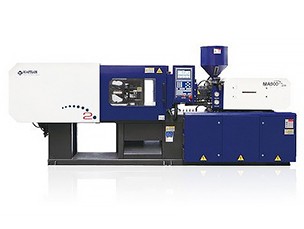
Geothermal ventilation systems
GEO VENTS and GEO VENTS DUO systems are designed to provide comfortable microclimate in the premises with minimum energy demand using the heat of the earth's surface layers.
The use of such systems contributes a lot to the improvement of energy efficiency and the decrease of operating costs.
The earth's surface is a natural heat accumulator. Solar radiation is the basic thermal energy source. Surface layers of the upper ground are subject to seasonal temperature fluctuations. These factors as well as the soil characteristics determine the ground temperature. At 3m depth and deeper, below the freezing point, the ground temperature remains constant all the year round and is equal to the average annual outside air temperature. The ground temperature at 1,5-3,2 m depth ranges from +5 up to +7°С in winter and +10 up to +12°С in summer. Ground temperature conditions are available in specialized sources. The experimental results showed that the geothermal heat exchanger can warm up the intake air up to 0°С or more in winter and cool it down from +18 to 20°С in summer.
GEO VENTS and GEO VENTS DUO allow the most efficient extraction and use of the geothermal energy with the ground heat exchanger to cool down air in summer and heat it up in winter.
The ground heat exchanger (GTO) integrated into GEO VENTS system is the easiest way to utilize the geothermal energy.
The air duct system is laid below the freezing point of the ground and serves as a heat exchanger between the ground and the air moved through these air ducts. As the ground temperature at 1.5-3.2m in winter is +5 to +7 °С and +10 to +12 °С in summer, the air transferred in the air ducts is heated during winter time and cooled during summer time through the air duct wall.
In case of correct placement of the air ducts the geothermal energy extraction efficiency is quite high at relatively low electric energy consumption.
The more powerful system Geothermal heat exchanger GEO VENTS DUO
The geothermal heat exchanger GEO VENTS DUO is an annular tube heat exchanger. Extract air from the premise moves through the internal air duct and the intake air from outside moves through the external air duct. The spiral seamed ducts made of stainless steel have a high thermal conductivity and are used as the first stage of the heat recovery. The air supplied to the premise is heated or cooled by the geothermal energy and due to heat exchange with the exhaust air through the internal air duct wall. Due to the design of the geothermal heat exchanger the air ducts laid in the ground have less length. With that the thermal characteristics of the geothermal heat exchanger become even more perfect.
The air duct length and diameter are determined by the air flow rate and the level of capital investment and operating costs. With regard to the filter replacement the operating costs for the geothermal systems are similar to the costs for the air handling units.
Geothermal ventilation is the best solution for free energy
Using of GEO VENTS or GEO VENTS Duo provides with the following benefits:
- Air warming up/cooling down. This means considerable energy saving;
- Freezing protection of the air handling unit heat exchanger.
 |
COMFORTABLE MICROCLIMATE DURING SUMMER TIME |
|
The geothermal heat exchanger provides intake air cooling during summer time. Air from outside is supplied through the air intake device to the geothermal heat exchanger where it is cooled by geothermal energy. After that the cooled air is supplied through the air ducts to the VENTS VUT air handling unit. For the unit operation in the summer period the summer block is placed instead of the heat exchanger. Such a design solution provides internal temperature decrease as well as a decrease of electric energy input for air conditioning and better microclimate in the house. |
 |
OPERATION IN LOW-SEASONS |
|
During low seasons when the difference between indoor and outdoor temperatures is insignificant the fresh air can be supplied through the intake grille located at the wall above the surface. In the periods when the indoor and outdoor temperature difference is high the air can be supplied through the geothermal heat exchanger thus ensuring the heating/cooling of intake air. |
 |
ECONOMY DURING WINTER TIME |
|
The fresh air is supplied through the air intake located at the geothermal heat exchanger where it is pre-heated and supplied further to the VENTS VUT air handling unit for further air warming-up. Air pre-heating inside the geothermal heat exchanger prevents icing of the unit heat exchanger and prolongs the effective time of the heat recovery use as well as minimizes the costs required for the additional air heating in the water heating coils/electric heater. |
Use of geothermal system combined with VENTS VUT air handling unit with heat recovery is the best solution for the residential house ventilation.
This system ensures permanent air exchange within the building and ensures comfortable micro-climate for the people inside. This system saves heat in winter and coolness in summer and protects the house from overheating. Moreover, it reduces energy consumption and heating costs. Geothermal energy ventilation systems are applied in cottages, stockhouses, shops, restaurants, industrial premises.
EFFICIENCY OF VEN TILATION WITH GROUND HEAT EXCHANGER AND HEAT RECOVERY
It is necessary to warm up the intake air during winter and low seasons and cool it down during summer period to enjoy breathing in comfortable fresh air. See below the calculation of the thermal energy consumption for warming-up of supply air without heat recovery but with geothermal systems for the moderate European climate.
 |
WINTER |
|
The daily average temperature within 80 days during winter time is -5°С. To make it feel comfortable, heat it up to +20°С. In such a way:
Sample calculation for 80 days operation of the air handling unit. Assumption: 50% of the operating time in full capacity mode, various capacity modes in different time periods around the year.
|
 |
SPRING/AUTUMN |
|
The daily average temperature level within 180 days during low season is +5°С. To make it feel comfortable it needs to be heated up to +20°С. In such a way:
Sample calculation for 180 days operation of the air handling unit. Assumption: 50% of the operating time in full capacity mode, various capacity modes in different time periods around the year.
|
 |
SUMMER |
|
The daily average temperature within 60 days during summer period is +20°С; however during the day time this temperature remains at the level +26°С within 8 hours. To make it feel comfortable it needs to be cooled down to +20°С by air conditioners. Their cooling capacity shall provide cooling by Dt=6°С.
Sample calculation for energy demand. Assumption: full capacity mode at 70% of the operating time, 8 hours per day:
|
| Thus the total energy demand for intake air heating or cooling makes: | Thermal energy demand per year [kWh] | Thermal energy saving per year [kWh] | |||
|---|---|---|---|---|---|
| With no heat recovery system | 5959 | - | |||
| With use of heat recovery system | 3325 | 2634 | |||
| With use of heothermal sustem and VENTS VUT air handlilng unit with heat recovery | 1538 | 4421 |
The use of the geothermal heat exchanger in the system provides thermal efficiency increase of Geo Vents Duo air handling unit by ℇ=2634/(4421-2634)*100% = 147%
The GEO VENTS DUO system extracts the low-grade ground energy which means that it serves as a thermal pump. SPF factor, the seasonal power factor (EN14511) is used to determine the system efficiency. This factor is calculated as thermal energy gain amount to electrical energy consumption amount ratio with respect to the seasonal air/ground temperature fluctuations.
The required ventilation system electrical energy consumption for extraction of 2634 kWh thermal energy per year is 635 kWh.
Thus, SPF = 2634/635 = 4,14.
Thank your for your time and your wish to improve our site.
